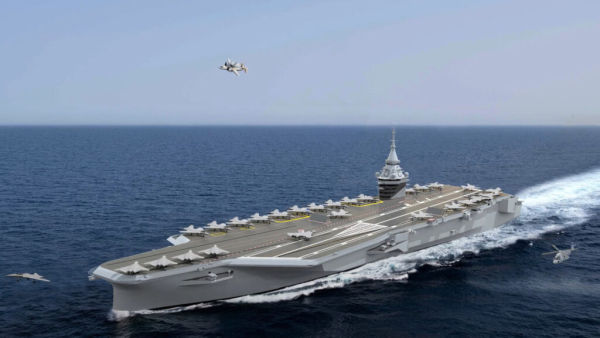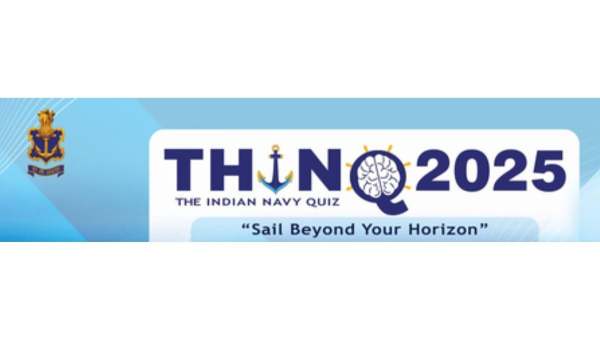France’s next aircraft carrier is set to become the largest and most advanced ever produced by a European nation. Initiated in 2020, the next-generation aircraft carrier program looks to replace France’s current aircraft carrier, the nuclear-powered Charles de Gaulle, which is expected to retire after almost four decades at sea in 2038. Dubbed PA-NG, which stands for Porte-Avions de Nouvelle Génération, or New Generation Aircraft Carrier, the carrier will be a major upgrade over its predecessor. Not only will it be twice as large, but it will also incorporate state-of-the-art aircraft launchers and onboard combat systems.
Perhaps the greatest upgrade will be the carrier’s new nuclear propulsion system. Powered by two K-22 nuclear reactors, the PA-NG will become the only non-American nuclear aircraft carrier roaming the seas. That is, unless China can develop its first nuclear carrier before Paris’s €10 billion+ project can get off the ground. Domestically, France’s carrier program has been controversial, with critics wondering whether modern weapons and the rise of tanker aircraft have rendered large aircraft carriers obsolete.
However, the carrier’s propulsion system could help alleviate some of these concerns, as fielding a nuclear aircraft carrier will give France a distinct advantage over its naval rivals. The necessity of expanding France’s carrier fleet was quickly underscored when Italy and Spain announced plans to explore adding aircraft carriers. Upgrading Europe’s Navy will likely become more urgent as the EU contends with an increasingly geopolitically aggressive Russia and China. Furthermore, it reinforces Europe’s recent military spending push as the continent seeks greater autonomy amidst uncertain American support.
A new era of nuclear propulsion
France reached a milestone in its aircraft carrier program when it announced it had begun building the two K-22 nuclear reactors that will form its propulsion system at a welding ceremony in late September 2025. Housed in a 330-foot reinforced nuclear section, the twin steel modules holding the 1,300-ton reactors will stand roughly 46 feet high and 42.5 feet across and are expected to generate a combined 440 megawatts for the ship’s propulsion and power systems. Each will be placed in separate, independent nuclear boiler rooms whose steam will power its three turbine-powered electric shafts.
The ship’s other motors and systems, including its upgraded launch system, are also powered by the nuclear reactors. Designed by French firm TechnicAtome with France’s Atomic Energy and Alternative Energies Commission, this state-of-the-art propulsion system will power PA-NG to an impressive 27 knots. PA-NG’s nuclear propulsion system will give the French Navy a clear advantage over its non-nuclear counterparts. The K-22 generators give the carrier virtually unlimited range, vastly expanding France’s strategic playbook.
As of this writing, roughly 160 ships worldwide are powered by nuclear propulsion, but the vast majority are submarines. The United States operates eleven of the world’s twelve nuclear aircraft carriers. The twelfth, of course, is France’s Charles de Gaulle. And while recent technological developments might make nuclear propulsion a potential solution for commercial ships, preserving Paris’ status at the forefront of the technology is critical to asserting its status as a global naval power. According to Military zoneprogram head Philippe Bahurel said that designing PA-NG will be more challenging than with the previous aircraft carrier and is seen by many as a culmination of France’s technological and manufacturing prowess.
Upgrades abound
Over 1,000 feet long and nearly 300 feet wide, the carrier displaces a whopping 78 thousand metric tons, roughly 35,000 tons more than its predecessor, making it the largest aircraft carrier ever built by a European country. This displacement puts the PA-NG in the same class as China’s new Fujian aircraft carrier, which is reported to be the largest, most advanced aircraft carrier outside of the United States. The new aircraft carrier will use three Electromagnetic Aircraft Launch Systems (EMALS) and three Advanced Arresting Gear (AAG) systems, manufactured by General Atomics, a major upgrade from the Charles De Gaulle’s steam-powered catapults and hydraulic arresting gear.
While the ship will likely have the same capacity as its predecessor, the use of new launch systems will enable PA-NG to execute deck-loaded strikes, meaning carriers can launch decisive first strikes — a critical capability in modern naval warfare. Another major benefit is that it will expand the types of aircraft it can launch, a key piece of the naval warfare puzzle. The French Navy will likely pair its new carrier with a fleet of Rafale M fighters, E-2D Hawkeye airborne early warning and control aircraft, and an expanded list of drones
The French government hopes to start the new carrier’s sea trials in 2036. If all goes well, PA-NG will be commissioned two years later, ushering in a new era for the French Navy. While the French Parliament debated postponing the project in 2025, French military brass pushed for the project to continue as planned.








